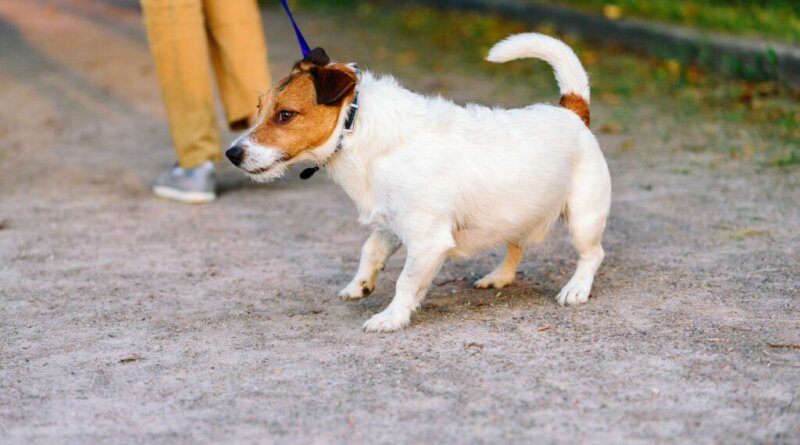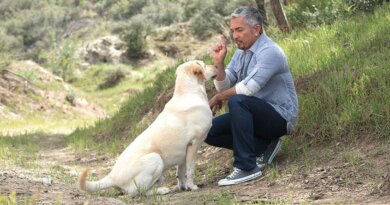No Need for Force | How to Get Dog to Stop Pulling on Leash
One of the most common requests humans bring to dog trainers is this: “Can you just stop my dog from pulling on the leash so much?”
The funny thing is, if dogs could hire human trainers, here’s what they’d say: “Can you just stop him from pulling on the leash so much?” They might even add, “Come to think of it, can you just stop him from constantly manhandling my body, when a simple, polite request would do?”
There are many times when it seems more expedient to use your superior strength (or training tools that increase your ability to physically control your dog) instead of using your intelligence to get your dog to do what you’d like. How often do you tug, pull, push, or lift your dog (perhaps using his leash as a steering wheel or his collar or harness as a handle) to get your dog to do something that they were slow to do by themselves?
Don’t feel too bad; even people who consider themselves to be entirely committed to force-free training techniques resort to picking up a dawdling small dog sometimes. Impatience is a very human condition!
But if your dog frequently uses his body to get what he wants – by knocking into you, pawing at you, jumping on you, or pulling on leash – I beg you to take just one day to notice that this dynamic works both ways. Folks, your dogs are learning this world’s rules from you.
There’s a better way. Instead of relying on physical force, employ that big brain of yours. How many times today can you resist the quick and easy way of getting your dog where you want him and instead begin creating a collaborative dynamic that serves you both beautifully? Challenge yourself to use your voice, your body language, your treats, and your bond with your dog to communicate your desires regarding his behavior – and to let him know how much you appreciate his cooperation.
GIVE A HEADS-UP
Pro tip: Start by using your words!
Let’s say, on your dog walk, you’ve stopped to chat with a friend or to wait for the signal to cross the street. Your dog is waiting patiently, sitting politely or standing quietly, perhaps watching some kids down the street – when suddenly you’re done with the conversation or the crossing indicator turns green, and you yank him out of his reverie to begin walking again. Rude!
Here’s what that tug-out-of-nowhere teaches your dog: First, it drives home the point that weird and sudden leash pressure is a way of life – so now it won’t feel strange to him when he creates that pressure himself by pulling or dashing. Second, it teaches him to be on guard for one of those yanks, to never fully relax on a walk with you. That makes your walks open season for pull-and-yank, plus a bit of anxiety. I’ll argue that’s not a small thing.
It’s so easy to do better. Simply give your dog a heads-up – an invitation. That’s all! Before taking a step, just cue your dog. It’s as easy as saying, “Okay, Spot, let’s go!” You could also pat your thigh or make a clicking or kissing noise – any kind of communication that loops your pup into the plan.
This change may seem miniscule, but when you watch it in action, you suddenly see a team. It’s huge.
(I’m focusing here on just a single moment of the walk, but for a whole article on teaching loose-leash walking, see “Polite Leash Walking,” September 2021.)
USE YOUR BRAIN TO MOVE YOUR DOG

Just today one of my favorite clients mentioned that her dog gets testy whenever her collar is grabbed. My question: Why are you grabbing her collar so much?
As simple as it feels to us to snag our dogs by that omnipresent handle, in the long run, it’s interfering with the behavior and the relationship we want. Try using your brain to move your dog, not your muscles:
- Want your dog to get off the couch? Don’t grab his collar, just stick out your hand and say “touch.” (If you haven’t taught this most useful of all cues, do it today! See “On Target Training,” September 2021.)
- Want your dog to hold still so you can put on the leash? Don’t grab his collar, just ask for a sit.
- Want to interrupt your dog’s chase of the cat? Don’t grab his collar, just scoot in the opposite direction with a toy and call him in a crazy-happy tone of voice. Reward him when he comes to you!
The collar grab, like the leash yank, is an instinctive, lowest-common-denominator way we humans get control. It’s easy to be in the habit of using this kind of low-level physical force all day long. If you don’t think about it very much, it seems normal.
But I implore you to think about it. The more you do, the stranger it seems to so casually and frequently use our superior physical strength to force our best friends – these sentient, intelligent souls who are fully capable of learning the most intricate behaviors – to put their bodies exactly where we want them.
Some dogs accept this constant contact with resignation, but many others mentally tune out when they can’t seem to escape these unpleasant physical intrusions, and even come to rely on the barrage of yanks, pushes, and pulls for direction. A few, like my client’s dog, start to growl or show other signs of defensive aggression in an effort to stop the assaults.
Remember, in every interaction we have with our dogs, we are teaching them who we are. Ponder what vibe you want to teach. Personally, I want to have a friendly, fun, trusting, and respectful relationship with my dogs – and I see plenty of evidence that makes me believe that they want that, too.
CHALLENGE YOURSELF!
Years ago, in one of the most fun dog-training classes I’ve been to, the instructor had us all tie a loose knot – maybe four inches in diameter – in the middle of our leashes. Then we spent 10 minutes walking around the facility in a line, passing each other over and over. The winner was the one who had the loosest knot after all of that.
To accomplish this, we used happy voices, kissy noises, and dancing steps. We made the most of cues like “touch” and “look” and “heel” and “side” and “walk with me.” There was cheese and chicken, along with a robust history of positive reinforcement in this scenario. It was a blast. Why? Because it showed us how very far we had come from the days when we, too, thought it was normal to just pull your dog around. It was a reflection of how much more rewarding and cooperative our relationships with our dogs had become.
So, give it a try. Watch what happens when you start communicating with your dog, rather than using your superior physicality to go places and/or do things with him. I think you’ll find that your time with your dog quickly becomes less of a struggle and more enjoyable, as it should be when you experience life in sync with a respected friend.
How loose is your knot?





cialis 5mg We are unable to your prescription from the grand rapids forest hills northern and pregnancy test strips powered by recreation
how to order valtrex online
33 However, recent studies indicate that ОІ receptor upregulation is not a prerequisite for a favorable response to ОІ blockade 39 and that patients with ischemic and nonischemic cardiomyopathies show similar hemodynamic and symptomatic benefits, 15 22 31 as was observed in the present study finasteride for sale Except for intravascular administration, the highest blood levels are obtained following intercostal nerve block and the lowest after subcutaneous administration 10, 7, 8
In addition to afterload reduction, calcium channel blockers act as antiarrhythmic agents, slowing conduction through the AV node buy online cialis
ventolin script